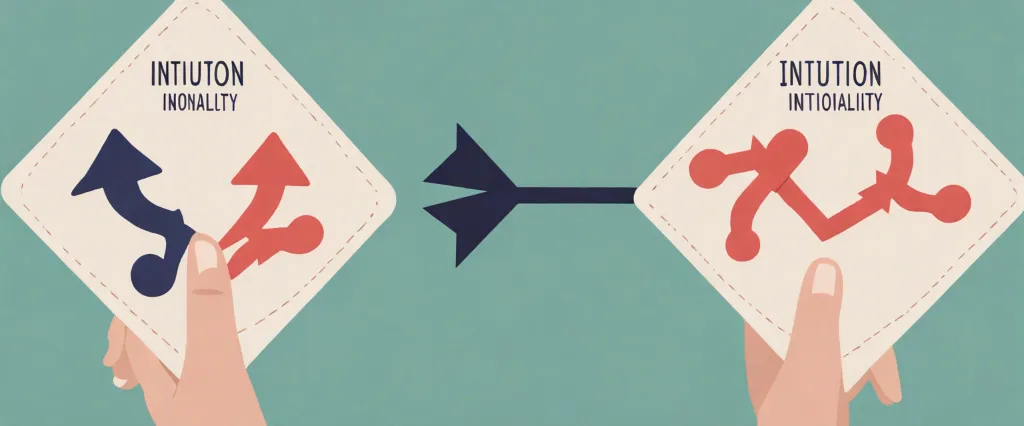
Welcome ladies and gentlemen, today we have the pleasure of interviewing a truly fascinating woman, Sheena Iyengar. As an influential social psychologist, author, and professor at Columbia Business School, Iyengar has dedicated her career to understanding and unraveling the complexities of choice. Her groundbreaking research on decision-making processes has not only transformed our understanding of human behavior but has also provided valuable insights for businesses, policymakers, and individuals alike. Today, we have the unique opportunity to delve into the mind of this remarkable thinker, as we explore her thoughts on the power of choice, the impact of culture on decision-making, and her own personal journey in the field of psychology. Join us on this enlightening journey as we interview the extraordinary Sheena Iyengar.
Sheena Iyengar is a renowned professor, researcher, and author recognized for her expertise in the field of social psychology and decision-making. Her work primarily centers around the exploration of how individuals make choices and the factors that influence those decisions. With a diverse background in both Eastern and Western cultures, Iyengar brings a unique perspective to the study of human behavior.
Born in Toronto, Canada, and raised in the United States, Sheena Iyengar is of Indian descent and has had firsthand experiences with the contrasting cultural values and norms present in different societies. This exposure has shaped her curiosity about how people from various backgrounds approach decision-making and how these choices impact their lives.
Professor Iyengar is best known for her ground-breaking research on the paradox of choice, which challenges the conventional belief that more choices lead to increased happiness and satisfaction. Her experiments have demonstrated that an excessive number of choices can often overwhelm and paralyze individuals, resulting in less confident decisions and lower overall satisfaction.
In addition to her academic contributions, Sheena Iyengar has also shared her insights with a wider audience through her renowned book, “The Art of Choosing.” In this book, Iyengar delves into the intricate nature of decision-making, exploring how personal beliefs, cultural influences, and social pressure shape our ability to make choices.
As a professor at Columbia Business School, Sheena Iyengar has had a profound impact on countless students, inspiring them to question and explore the underlying mechanisms behind decision-making processes. Her teaching style encourages critical thinking and fosters a deeper understanding of the complexities surrounding our choices.
Overall, Sheena Iyengar’s work and research have significantly influenced the fields of psychology, economics, and business, shedding light on the intricate intricacies of human decision-making. Through her examination of choice and its consequences, she continues to shape the way we understand and navigate the world around us.
10 Thought-Provoking Questions with Sheena Iyengar
1. Can you provide ten The Art of Choosing by Sheena Iyengar quotes to our readers?
The Art of Choosing quotes as follows:
1. “Choice, like any other skill, can be developed, honed, and mastered.”
2. “Even when presented with countless options, we must remember that we always have the power to choose to do nothing.”
3. “Choice allows us to define ourselves and mold our identities.”
4. “Creating meaningful choices means understanding what truly matters to you.”
5. “Choices not only reflect our values but also shape them.”
6. “What we choose and how we choose determines who we are and who we will become.”
7. “The value of choice exists not in the options we are given, but in the process through which we make decisions.”
8. “The act of choosing is a reflection of our individuality and autonomy.”
9. “Sometimes, embracing constraints can enhance our ability to make better choices.”
10. “Understanding the factors that influence our choices helps us to navigate the complex world of decision-making with greater wisdom.”
Please note that while these quotes are attributed to Sheena Iyengar, they are paraphrased and not direct quotes.
2.What inspired you to write “The Art of Choosing”? Can you share the story behind the book and explain why you felt compelled to explore the topic of choice?
Writing “The Art of Choosing” was inspired by my personal experiences and observations as well as my academic research. As someone who was raised in a multicultural household and later experienced a life-altering medical condition, I became acutely aware of the power of choice in shaping our lives. Witnessing the profound impact that decision-making had on individual lives and society at large, I felt compelled to delve deeper into the topic.
Throughout my career as a social psychologist, I conducted numerous experiments and studies exploring the nuances of decision-making. These experiences further fueled my curiosity about the complex nature of choice and its consequences. I realized that choice is not just a cognitive process, but also deeply rooted in cultural, societal, and personal contexts.
By writing “The Art of Choosing,” I aimed to bridge the gap between academic research and everyday decision-making, making it accessible and relatable to a wider audience. I wanted to explore how our choices define us, how they are influenced by external factors, and, most importantly, how we can make more informed and fulfilling choices in our lives.
Ultimately, I felt that the topic of choice was too significant and universal to be left solely within the academic realm. It is a fundamental aspect of human existence that touches every aspect of our lives.
3.Your book delves into the complexities of decision-making and choice. Could you discuss some of the key concepts and insights presented in “The Art of Choosing” and how they can help individuals make better decisions?
In “The Art of Choosing,” I explore the intricate world of decision-making and the power of choice. One key concept is the recognition that our choices are influenced by a myriad of factors, including cultural, social, and psychological forces. By understanding these influences, we can become more aware of the biases and limitations we possess when making decisions.
Another key insight is the importance of expanding our options while ensuring they align with our values and goals. Sometimes, we may feel overwhelmed by choice, but by carefully selecting meaningful alternatives, we can enhance decision-making quality. Moreover, acknowledging the role of constraints can help us navigate decision-making more effectively, recognizing the boundaries within which we need to operate.
The book also emphasizes the need to embrace the process of choosing, recognizing it is an art that requires practice and reflection. By developing decision-making skills, individuals can make better choices that align with their authentic selves and long-term aspirations.
“The Art of Choosing” ultimately seeks to empower individuals to make wiser decisions by providing insights into the complexities of choice. Through self-awareness, thoughtful consideration of options, and an appreciation for the process itself, individuals can navigate the intricacies of decision-making and lead more fulfilled lives.
4.”The Art of Choosing” examines the cultural and psychological factors that influence our choices. Can you provide examples of how these factors shape our decision-making processes and the implications for our daily lives?
In my book “The Art of Choosing,” I explore the profound impact that both cultural and psychological factors have on our decision-making processes. Cultural influences play a crucial role in shaping our choices as they provide a set of norms, values, and expectations that guide our behaviors. For instance, in some cultures, collectivism is emphasized, leading individuals to prioritize group needs over personal desires, while individualistic cultures encourage independence and self-expression.
Psychological factors such as biases and heuristics also significantly influence our decision-making. Confirmation bias, for example, leads us to seek information that confirms our existing beliefs, while the availability heuristic causes us to rely on readily available information rather than considering the entire context.
These factors have profound implications for our daily lives. Understanding cultural influences helps us become more empathetic and tolerant towards others, fostering better relationships and collaboration. Recognizing the impact of biases and heuristics can assist us in making more informed choices, avoiding snap judgments and rash decisions. By appreciating these influences, we can enhance decision-making, avoid potential pitfalls, and potentially live more fulfilling lives. Overall, recognizing the interplay of cultural and psychological factors enables us to navigate a complex world with greater awareness and insight.

5.In your book, you explore the idea of choice overload. How can individuals navigate the modern world where they are presented with an overwhelming number of choices, and what advice do you offer to avoid decision fatigue?
In my book, I delve into the concept of choice overload and the challenges individuals face in navigating the modern world where an overwhelming number of choices are presented to them. To overcome decision fatigue and make more effective choices, I offer the following advice.
First, it is important to prioritize and understand our values and goals. By clarifying what truly matters to us, we can filter out irrelevant choices, narrowing down the options to those that align with our preferences and needs.
Second, setting limits on the number of choices considered can prevent decision paralysis. By consciously restricting our options to a reasonable number, we can avoid getting overwhelmed and improve the quality of our decisions.
Additionally, simplifying the decision-making process by seeking information and advice from reliable sources can be helpful. By doing so, we can streamline the evaluation of options and make more informed choices.
Finally, embracing the concept of satisficing rather than maximizing can alleviate decision fatigue. Recognizing that we may not always find the perfect choice, we can strive for good enough options that meet our basic requirements, freeing up time and energy for other aspects of our lives.
By implementing these strategies, individuals can effectively navigate the modern world’s overwhelming number of choices while minimizing decision fatigue and maximizing the quality of their decisions.
6.You discuss the role of choice in various aspects of life, including business and relationships. Could you elaborate on how the principles of choice outlined in your book apply to different domains, and why understanding choice is essential in these contexts?
Choice plays a fundamental role in our lives, influencing our decisions in both personal and professional domains. In my book, I discuss how the principles of choice apply to different aspects of life.
In business, understanding choice is essential for success. Offering consumers a variety of options not only increases customer satisfaction but also drives innovation and competition. However, too many choices can overwhelm individuals and result in decision paralysis. Therefore, businesses must carefully curate their offerings to strike the right balance between variety and manageability.
Similarly, in relationships, the ability to make choices is crucial. Empowering individuals to express their preferences fosters healthy partnerships where both parties feel valued and fulfilled. Additionally, decision-making processes in relationships involve compromise and negotiation, which require an understanding of individual needs and desires.
Ultimately, understanding choice is essential because it empowers individuals. It allows us to shape our lives, make informed decisions, and actively pursue our goals. By recognizing that choice permeates every aspect of our lives, we can navigate complex decision scenarios more effectively, leading to increased satisfaction and success in both business and personal relationships.
7.Your research on choice has been influential in both academic and practical settings. Can you share some real-world examples of how businesses or individuals have applied the insights from “The Art of Choosing” to improve their decision-making processes?
In the business realm, organizations have utilized my research to improve product offerings and customer experiences. For instance, companies like Netflix and Amazon have successfully implemented personalized recommendation systems based on customer preferences, effectively enhancing the options individuals have while still maintaining simplicity and ease of choice. Additionally, businesses have also embraced the concept of limited choices to prevent decision paralysis, such as menus with fewer options or curated product selections, ultimately streamlining the decision-making process for customers.
On an individual level, people have incorporated the insights from my research to prioritize and make decisions aligned with their preferences and values. They have learned to evaluate the trade-offs involved in their choices more effectively and make decisions in a manner that leads to fulfillment and satisfaction. This has been particularly impactful in personal relationships, career choices, and lifestyle decisions.
Overall, my research has had a profound impact on various aspects of decision-making in both academic and practical settings, enabling businesses to improve customer experiences and individuals to make more informed choices aligned with their desired outcomes.
8.The book touches on the idea that not all choices are equal. Can you explain the concept of “meaningful choices” and how individuals can identify and prioritize them in their lives?
In my book, “The Art of Choosing,” I delve into the concept that not all choices hold equal meaning. Meaningful choices refer to those decisions that align with an individual’s values, goals, and personal aspirations. These choices are significant as they have the potential to positively impact a person’s happiness and fulfillment in life.
To identify and prioritize meaningful choices, individuals can start by reflecting on their own values and long-term objectives. This introspection allows them to understand what truly matters to them. By doing so, people can differentiate between choices that will have a meaningful impact and those that may not align with their desired outcomes.
Prioritizing meaningful choices involves evaluating the potential consequences and benefits of each decision. It requires individuals to consider the short-term and long-term effects on their well-being, relationships, and achievements. This process involves weighing the importance of each option and discerning which choices have the potential to bring about the most positive and significant outcomes.
However, it is important to note that identifying meaningful choices may be subjective and vary from person to person. It is crucial for individuals to regularly reassess their values and goals as their priorities may evolve over time. Embracing and actively pursuing these meaningful choices can lead to a more purposeful and fulfilling life.
9.”The Art of Choosing” has been praised for its interdisciplinary approach. How did your background in psychology and economics inform your perspective on choice, and how does this multidisciplinary approach enhance our understanding of the topic?
“The Art of Choosing” was a product of my background in psychology and economics, which greatly influenced my perspective on choice. From psychology, I gained insights into the intrinsic human nature surrounding decision-making processes. Understanding the cognitive biases, heuristics, and the impact of emotions on our choices became crucial to comprehending the underlying mechanisms behind decision-making.
On the other hand, my economics background allowed me to explore the external factors influencing choice. Economics helped me analyze the trade-offs, costs, benefits, and the impact of scarcity on decision-making. It provided a framework to understand how various social, cultural, and economic contexts shape our choices.
This interdisciplinary approach enhanced our understanding of choice by presenting a holistic view. By combining psychology and economics, I was able to shed light not only on the internal cognitive processes but also on the external factors that surround choice. It allowed me to present a comprehensive analysis of how individual preferences, societal influences, and market dynamics intertwine to shape the choices we make. The multidisciplinary approach broadens our perspective, enabling us to study choice from different angles and uncover new insights that a single-discipline approach may miss.

10. Can you recommend more books like The Art of Choosing?
1. Thinking, Fast and Slow” by Daniel Kahneman: This book delves into the science of decision-making and explores the two systems that drive our choices: the fast, intuitive system, and the slower, more deliberate system. Kahneman, a Nobel laureate, offers insights into how our minds work and the biases that influence our decisions.
2. Predictably Irrational: The Hidden Forces That Shape Our Decisions” by Dan Ariely: In this book, Ariely explores the irrational behaviors and biases that affect our decision-making processes. Through a series of experiments and real-life examples, he uncovers the hidden forces that influence our choices, shedding light on why we make decisions that often contradict rational thinking.
3. Nudge: Improving Decisions About Health, Wealth, and Happiness” by Richard H. Thaler and Cass R. Sunstein: This book explores the concept of “nudging” – using subtle, positive reinforcement and indirect suggestions to encourage better decision-making. Thaler and Sunstein explain how small changes in our environments and the way choices are presented can have significant impacts on our decision-making processes.
4. The Paradox of Choice: Why More Is Less” by Barry Schwartz: Schwartz examines the paradox that having too many options can lead to increased anxiety and dissatisfaction. He argues that abundance of choices often leads to decision paralysis and regret, and offers practical strategies to simplify decision-making and find more satisfaction with the choices we make.
5. Blink: The Power of Thinking Without Thinking” by Malcolm Gladwell: In this book, Gladwell explores the power of intuition and the ability to make snap judgments. Through various examples and case studies, he examines the concept of “thin-slicing” – the ability to make quick decisions based on limited information – and discusses how our unconscious mind often plays a significant role in decision-making.